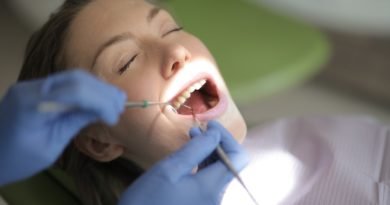Decoding Dental Fillings: Understanding the Costs Involved
Did you know over 90% of adults have battled at least one cavity in their lifetime? If left unattended, a simple cavity can transform into a tooth abscess, escalating to a dangerous, potentially life-threatening infection.
This shocking reality underscores the vital importance of diligent oral care and regular dental visits. Dentists are our first line of defense against cavities, and if detected, they mend them using dental fillings.
Are you grappling with toothache and wondering, “how much is a dental filling going to cost me?” You’ve come to the right place.
Join us as we dive deep into all the crucial information you need on the subject. Buckle up, it’s going to be an enlightening journey!
Understanding Dental Fillings
Dental fillings rank high among the most frequently performed dental procedures. They serve as the go-to solution for repairing teeth damaged by decay.
Common materials used for fillings include amalgam, composite resin, glass ionomer, and gold. Each brings its unique set of advantages to the dental table.
The procedure typically requires local anesthesia to numb the area. Once numbness sets in, the dentist meticulously cleans and removes the decayed area.
Following this, they’ll fill the cavity with a tooth-colored filling material. This is then ‘cured’ or hardened with a special light. This step seals off the cavity, preventing future tooth decay by keeping food debris and bacteria out. To learn more, click here.
The Price Tag of a Dental Filling
Filling prices can range from $200 to $600, varying based on a multitude of factors such as the size and location of your cavity.
For instance, fillings for cavities in molars are usually pricier due to their tricky-to-reach location. They often demand additional equipment, further pushing up the cost.
The choice of filling material significantly impacts the final cost. Composite fillings, for example, may cost twice as much as their silver amalgam counterparts. Gold foil fillings, on the other hand, can peak at a whopping $650 for a single surface.
What About Insurance Coverage?
Dental fillings fall under the ‘basic’ dental care category and are typically covered by most insurance plans. Still, most dental offices strive to be as accommodating as possible.
Your policy specifics may require you to cover part of the costs. For instance, a plan might cover 70% of the expenses, leaving you to settle the remaining 30%.
If you lack insurance, discuss a possible payment plan with your dentist. There are also governmental dental programs, such as Medicaid and CHIP, that you might be eligible for.
The Bottom Line on Dental Hygiene
We hope we’ve shed some light on the question, “how much does a dental filling cost?” As you can see, several variables come into play, such as the material used and the size of the filling. If in doubt, don’t hesitate to reach out to your trusted dentist!
Did you find this information valuable? Eager for more content like this? Then make sure to check out our comprehensive health section!




